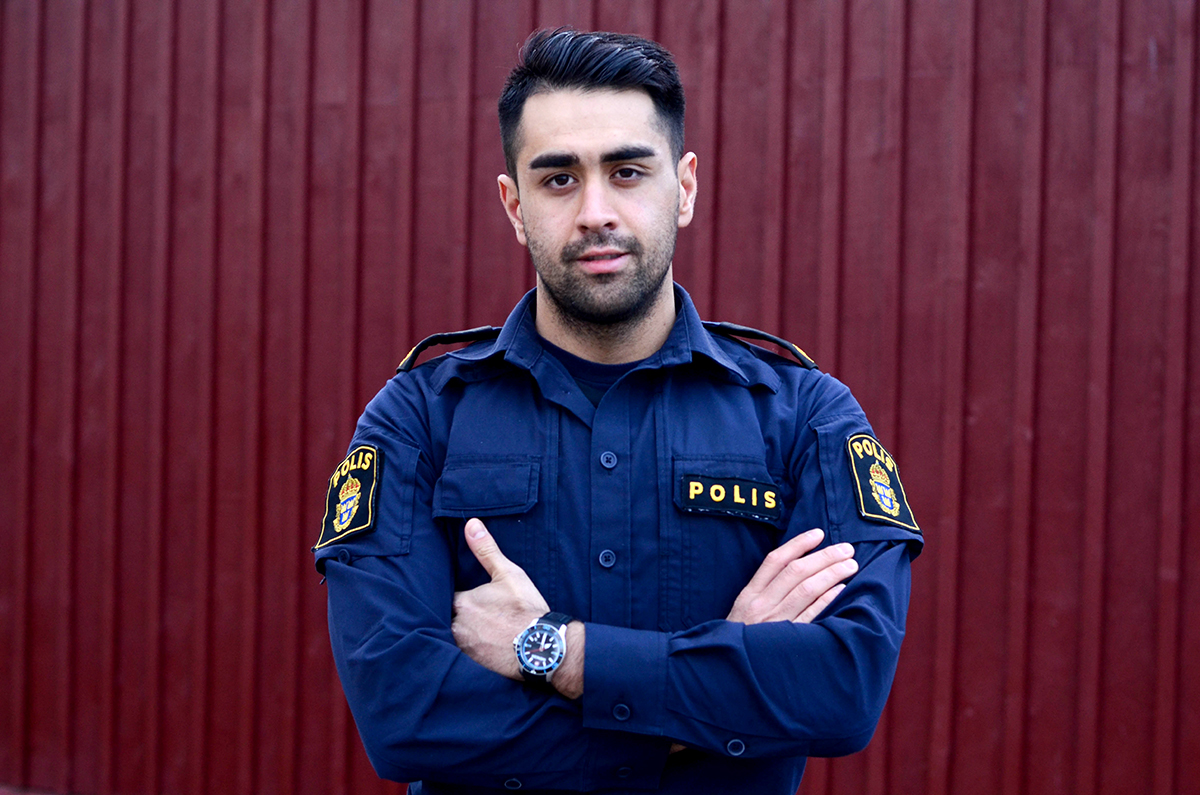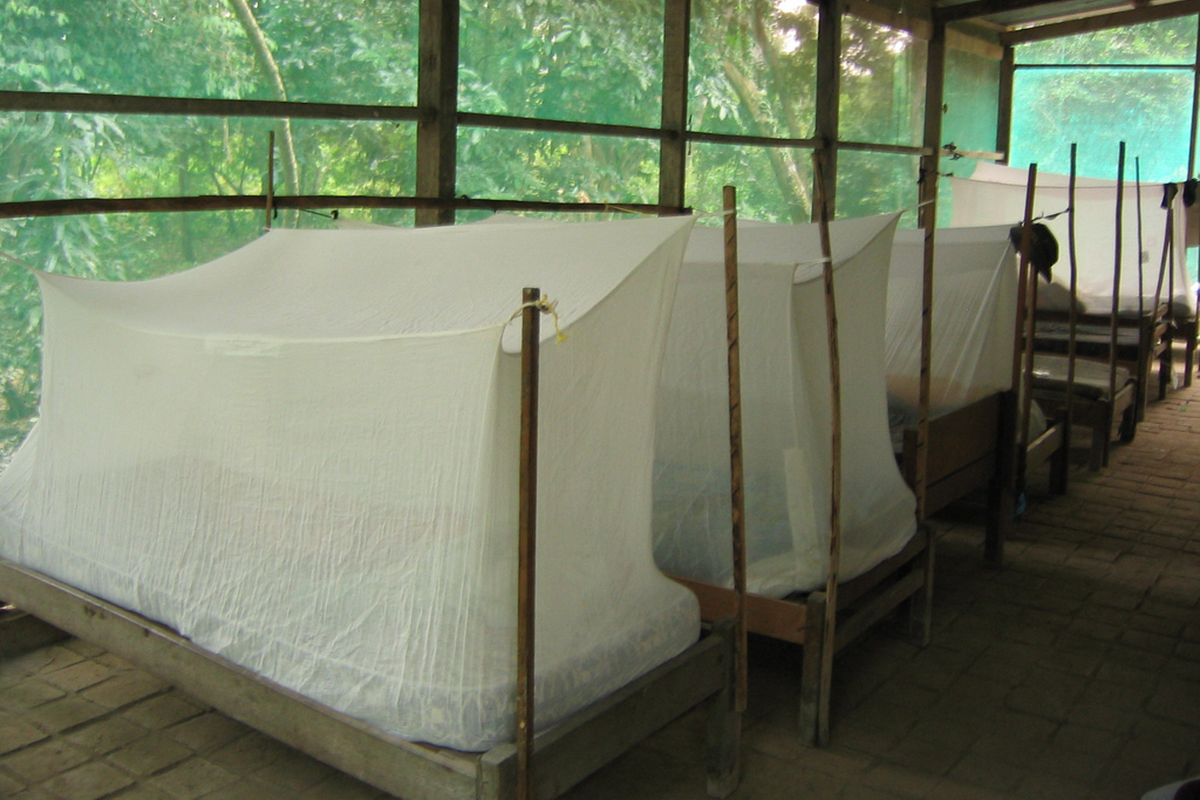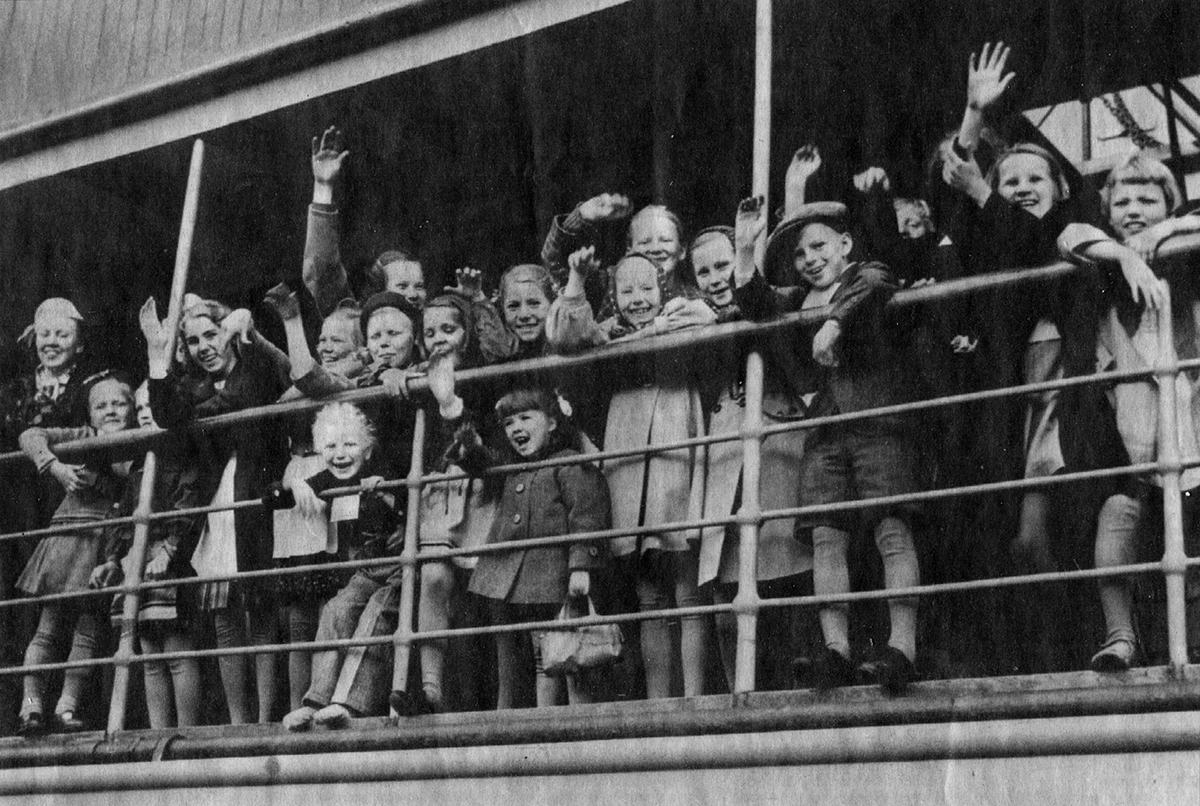How Sweden's Blind Altruism Is Harming Migrants
In terms of culture, Afghanistan is the opposite of Sweden.

The 15-year-old boy was standing outside the police station, late one night during the immigration wave of 2015. I was meeting youths like him almost every day, as they came to the station to apply for asylum. Sweden was the country in Europe that took in most immigrants per capita during the crisis, with numbers up to over 160,000 by the end of the year. 35,000 of them, mostly Afghans, claimed refugee status as unaccompanied minors. Linköping is a small town and I was the only police officer there who spoke their language, Dari.
As we sat down to go through routine questioning, I started thinking about my own memories of coming to Sweden from Afghanistan with my parents and siblings. I was a few years younger than the boy sitting across the table from me.
I wanted to tell him that he had come to an amazing country. I wanted to tell him that he had all the opportunity in the world to build a better future for himself. That he no longer had to be afraid. But I didn’t have time to say any of those things before the boy broke down before me. He couldn’t stop crying.
He told me that he had lost his mother and big brother among hundreds of other migrants in the Turkish mountains. Suddenly on his own, he had managed to travel through Germany and Denmark before finally reaching Sweden. He had just gotten off the train.
He asked me through his tears if he would ever see his mother again.
I realized that this kid wasn’t thinking about his education, or his future. He just wanted his Mom.
* * *
I have quit my job as a policeman since then, and I now work full-time meeting, talking and giving lectures to unaccompanied Afghans in Sweden. I want to do my part to help them integrate into their new home country—a process that is often anything but easy.
To me, coming to Sweden from Taliban-run Afghanistan in 1997 was like winning the lottery. Sweden may well have saved my life. And at the same time, there were so many things about my new country that I found puzzling and even shocking.
Why would the Swedish state sell alcohol to the public? How could boys and girls date, without bringing shame on their families? And why the hell would anyone drink milk with their food?
Another thing I couldn’t begin to understand was how two men could marry each other under Swedish law. The way I saw it, that was just morally wrong.
Many of the Afghan youths I meet today are just as puzzled—which should come as no surprise. The World Value Survey maps social, cultural, moral, religious norms in different parts of the world. Year after year, our little country far to the north ends up at the upper right-hand corner of that map. Only Japan is more secular than Sweden. But no other country is as individualistic as ours. In that sense, Sweden might be the most extreme country in the world.
But it is also striking that most of the migrants that Sweden has received in recent years come from the far-left corner of the map. In terms of culture, Afghanistan is the opposite of Sweden. And this has brought problems that Swedish authorities first failed to foresee, and then for a long time failed to acknowledge even when they had become all-too-obvious to the public.

In the wake of the mass attacks on women in the German city of Cologne on New Year’s Eve of 2015, it turned out that a similar phenomenon had occurred in Sweden. At a yearly youth music festival in central Stockholm, groups of boys and young men had encircled and sexually assaulted a number of young girls. Two hundred boys were expelled from the festival area in 2015. Eventually, the Stockholm police had to admit that these incidents were kept from the public because of fears of “playing into the hands of the Sweden Democrats,” which is Sweden’s anti-immigration party.
Similar reports came from public swimming pools in different parts of Sweden. It later transpired that most suspects at the music festival, as well as many suspects at public baths, were “unaccompanied minors”—a polite way of pointing out young Afghans. Suddenly, authorities were promising to educate the newcomers in “Swedish values.” Often it came down to me, the policeman who spoke Dari, to meet these youths and talk to them about Swedish norms.
Many of the Afghans I meet wish for nothing else but to integrate into Swedish society. But it is equally clear that a minority of these newcomers are not interested in living by the norms of their new home country. As the Swedish police concluded in a recent report on sexual assault in the country: “The suspects of crimes carried out by a large group of offenders, in public, were mostly people with foreign citizenship. Regarding crimes reported in public swimming pools, the alleged perpetrators were mainly asylum-seeking boys.”
I believe that these problems reflect three facts: First, indeed, a difference in values, especially when it comes to views on sexuality, nudity and women’s rights. Remember the World Values Survey cultural map, and where the so-called African-Islamic values are found compared to liberal Sweden. Afghanistan has been found to be one of the most dangerous countries in the world for women.
Second, unaccompanied youths from Afghanistan are thrust into an environment where they are suddenly no longer under the control of their family, clan or a patriarch. When I ask the youths why these attacks happen, one common response is: “There’s too much freedom in Sweden, which many of us simply can’t handle.”
Third, the Swedish state has been utterly unprepared to deal with the problem. Sweden has famously liberal laws, and norms are expressed in an understated way, which reflects the peaceful nature of Swedish society.
Still, the youths I meet today are at stage in their lives where they are receptive to, and curious for, new impressions. I tell them about the laws that make up the Swedish constitution. I talk to them about the fundamental cultural values, such as women’s rights, equality, and each and every person’s right to make their own life choices, irrespective of the wishes of their family. I talk to them about freedom of speech, including the right to blaspheme. I answer their questions about everything from the Swedish labor market to how to use a condom (yes, we Swedes believe in talking about such things with teenagers who ask).
But there is also another side of the problem, which has to do with the nature of the asylum laws for unaccompanied minors.

* * *
The numbers of unaccompanied minors began to rise sharply in Sweden throughout the 2000s. To many Swedes, news of this growing flow of “unaccompanied children”—as they were called in the media—evoked images of the children who were saved from Finland during the Finnish-Russian war (80,000 children were sent from Finland to live in Swedish foster homes between 1939 and 1944). The laws surrounding the asylum process rested on the idea of the unaccompanied minor as a child, alone in the world—like the 15-year-old boy I met that night at the Linköping police station.

For a number of years, individuals who claimed to be unaccompanied minors could usually expect to get a residence permit in Sweden. There were no medical checks of their age. Minors received housing during the asylum process, either in homes with professional staff, or with Swedish families, and were sent to school with Swedish children. That is part of the reason why this particular asylum wave has been so expensive for Sweden—with costs at 2.8 billion USD in 2015 alone. Sweden’s defense budget that year was 4.5 billion USD (26 billion Kronor and 42 billion Kronor respectively).
In the city of Uppsala, one-in-six youths aged between 16 and 18 is now an unaccompanied minor, according to official statistics (but note that many can be expected to be older). Valerie Hudson, professor at the Bush School of Government and Public Service at Texas A&M University, has calculated that this particular immigration flow has created a male to female ratio of 123:100 among those registered as 16 to 17-year-olds in Sweden. On January 5, 2016, Hudson wrote of Sweden’s gender imbalance in Politico:
In China, long the most gender-imbalanced country in the world, the male-to-female ratio of approximately 117 boys for every 100 girls in this age group now comes up short of Sweden’s gender gap. China’s sex ratios are still more abnormal across other age groups; the imbalances there extend all the way down to birth sex ratios due to the country’s severe birth restrictions, while Sweden’s abnormalities do not. But young adult sex ratios are arguably the most crucial of all for social stability.
At the same time, this particular immigration wave caused tensions in Swedish society. Media published reports on “unaccompanied children,” with images that quite clearly showed adult men. This doublespeak sparked resentment among Swedes, who felt that their country’s generosity was being abused.
It was becoming evident that the Swedish laws had created incentives for Afghan families and clans to send their sons to Sweden as an economic investment—an issue that became a taboo topic in Swedish political discourse. Indeed, zero percent of unaccompanied minors carried valid ID documents when they came to Sweden during the immigration wave, which suggests that a significant proportion may have lied about their age. Seventy-eight percent of those who eventually underwent age tests after such tests had been reintroduced were found to be adults.
There is still an ongoing debate in Sweden on the validity of those medical tests, which is why the figure 78 percent can be questioned. It is also important to note that only a minority of unaccompanied minors have undergone such tests.
But it is clear that many of the so-called “unaccompanied minors” were adults, and that many came from intact homes—a large-scale abuse of a system designed for children who are alone in the world.
Tensions rose further when Alexandra Mezher, a 22-year-old who worked at an asylum home for unaccompanied minors, was stabbed to death by one of the residents. Her killer, a Somali asylum seeker who had claimed to be 15 at the time, was eventually deemed to be an adult by a Swedish court.
The taboo finally broke when Sweden’s public radio, SR, aired a program about men, some in their thirties or even forties, posing as children to qualify as unaccompanied minors. The program revealed widespread abuse of the system, with men who shaved their arms to look younger, and who were sent to school with Swedish children.

I do not blame these men, because I can’t honestly say that I wouldn’t have done the same thing if I had been in their shoes. I know what life is like in Afghanistan. I also know that many of these men are sent to the West against their will by their families or elders. Some never chose to go to Sweden.
But the phenomenon of the “unaccompanied children” who were clearly men, undermined trust between the public on the one hand, and the media and politicians on the other who insisted that this was a legitimate phenomenon.
Nor will it help Afghans in their integration process.
Take, for instance, the “unaccompanied minor” I met together with his guardians, an elderly Swedish couple that had opened their home to him. During our meeting, they referred to him as “our dear child.” He went to a Swedish high school.
But the man was clearly in his mid-30s. While we were having coffee and cake, prepared by his foster Mom, he seemed to realize that I knew, and looked down in embarrassment.
How do you ever start integrating into a new country, when your entire life is based on such a blatant lie?
* * *
By 2015, the wave of unaccompanied minors had reached such a level that it clogged the system in a way that harmed actual children: I met a young Afghan girl who was clearly suffering abuse from the family she had been assigned by the Swedish authorities. During the height of the immigration wave, the Swedish state simply didn’t have time to make sure that children were safe.
There were also reports of boys being gang raped by other residents at homes for unaccompanied minors—an entirely new phenomenon in Sweden.
During my travels around the country, I have encountered a number of legal guardians, social workers, staff at homes for unaccompanied minors and foster parents who definitely should not be working with asylum seekers. I met a clearly bigoted man who tried to make Muslim asylum seekers eat pork because he claimed this was a “part of the integration process.” Still, he was entrusted with caring for minors.
Why? Because Sweden had no plan for how to receive those who came during the refugee wave. We wanted to do good, and our hearts were in the right place. But, as for the practicalities, the Swedish state just hoped for the best.
Last year, the Swedish Parliament issued an amnesty for a large group of Afghans whose asylum applications have been turned down—including adult men who had claimed to be minors. In short, the law means that those who came to Sweden and applied for asylum as unaccompanied minors before November 24, 2015, and who have waited more than 15 months for the asylum application, can receive a temporary residence permit if they intend to study at the high school level. After completing their studies, asylum seekers have six months to get a job. If they fail, they will have to leave the country—at least they will be obliged to in theory. I have met many Afghans who vow to stay illegally if Sweden decides to expel them.
Meanwhile, reports are piling up about young Afghans mired in homelessness, drug abuse and even prostitution. Suicide numbers are considerably higher among Afghans in Sweden, than among other Swedes. In the university city of Uppsala, a 40-minute train ride from Stockholm, police have identified some 90 unaccompanied minors who spend their days abusing heroin at the train station, while others are doing their best to learn the language and integrate into Swedish society.
I keep meeting as many of them as I can. I keep telling them that they have come to an amazing country, and that they have all the opportunity in the world to build a better future for themselves.
Editor’s note: Mustafa Panshiri is no longer employed as a police officer. The views expressed in this article do not necessarily reflect those of the Swedish Police. Parts of this article have previously been published in the Swedish online magazine Kvartal.












